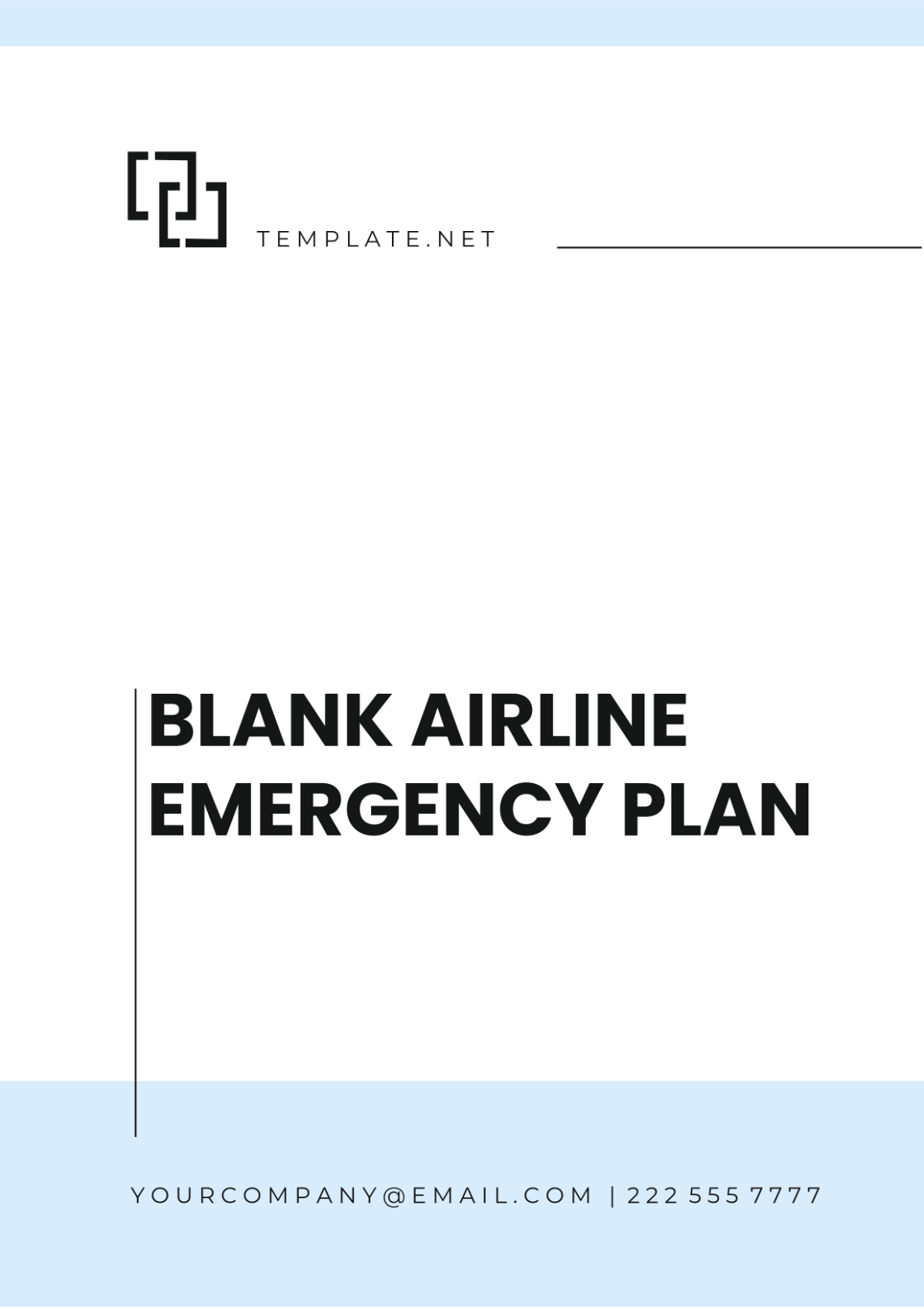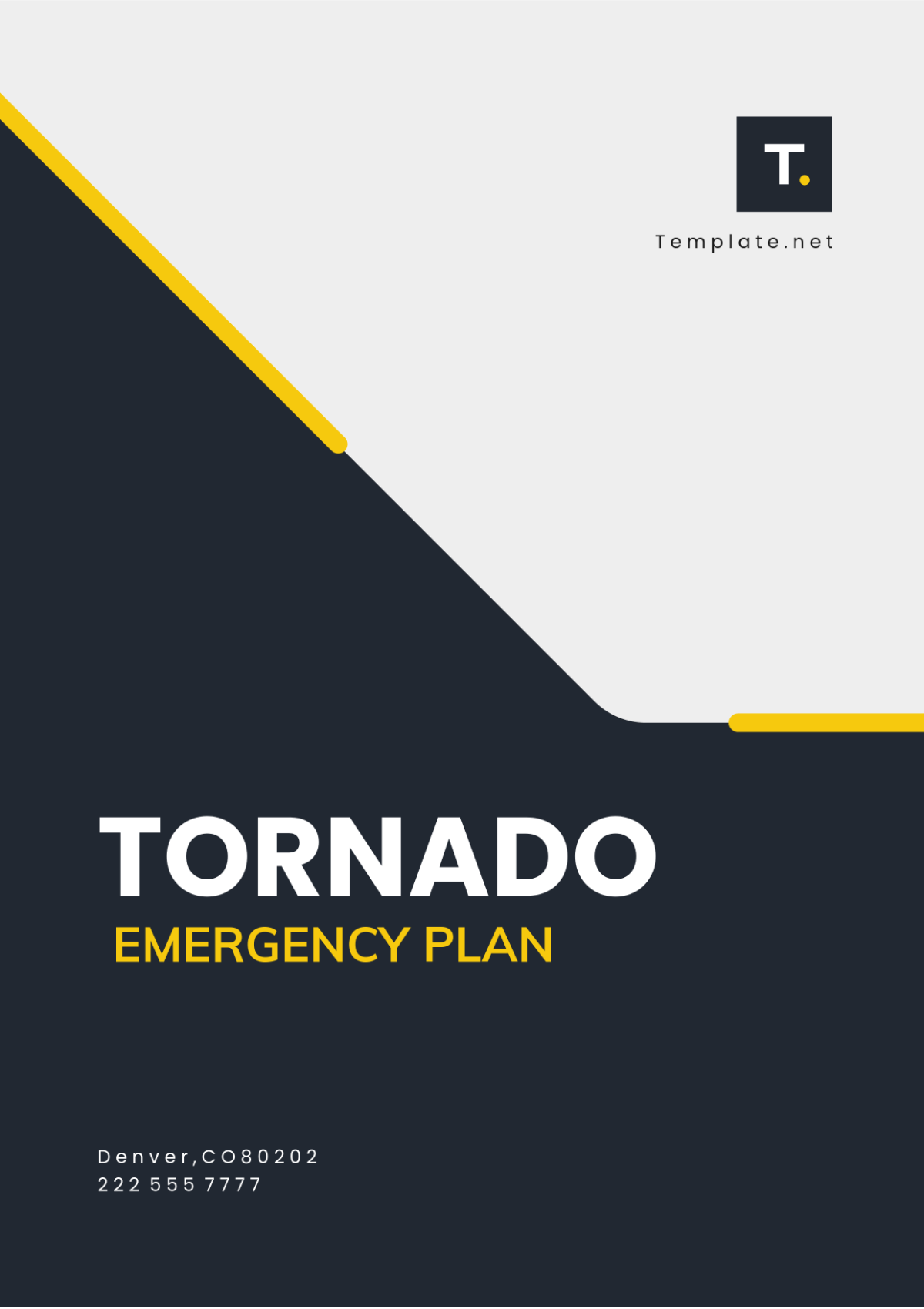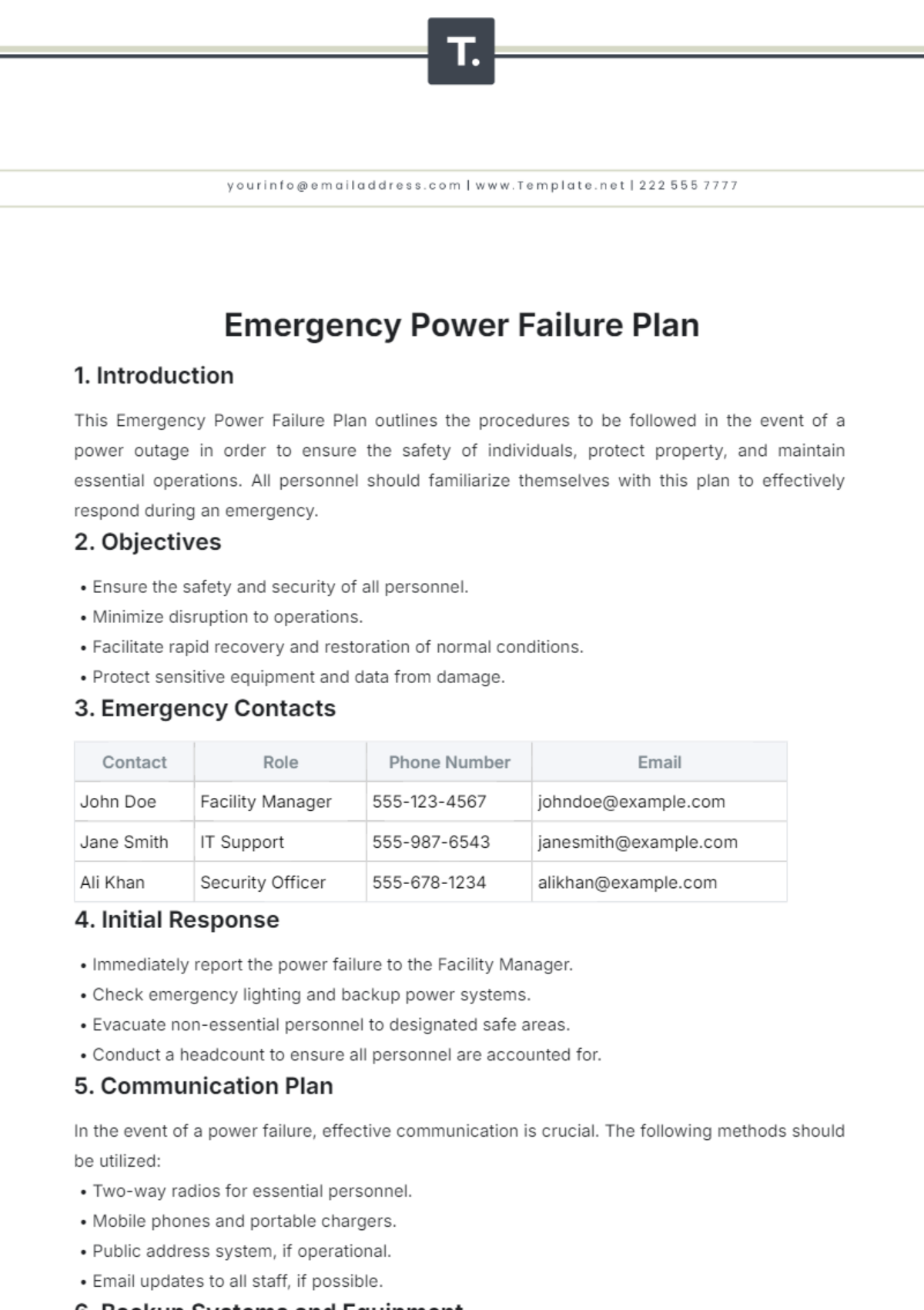Mining Emergency Response Plan
I. Introduction
A. Purpose of the Plan
The purpose of this Mining Emergency Response Plan (MERP) is to ensure the safety of all personnel, mitigate environmental damage, and safeguard mining assets during emergencies. This document provides a framework for identifying, responding to, and recovering from potential incidents. [Your Company Name] is committed to fostering a culture of preparedness and resilience in all its mining operations.
B. Scope and Applicability
This plan applies to all employees, contractors, and stakeholders involved in [Your Company Name]’s mining operations. It covers both surface and underground activities, addressing potential emergencies such as fires, explosions, and hazardous material spills. The MERP also extends to interactions with external agencies and nearby communities during crises.
C. Objectives of Emergency Preparedness
The primary objectives are to prevent loss of life, reduce operational downtime, and comply with legal obligations. Additional goals include minimizing environmental harm and maintaining clear communication channels during emergencies. The plan emphasizes training, resource allocation, and continuous improvement to adapt to evolving risks.
II. Risk Assessment and Analysis
A. Identification of Potential Emergencies
Potential emergencies at [Your Company Name] include natural disasters such as earthquakes and floods, as well as industrial hazards like mine collapses and chemical spills. Each risk is categorized based on its likelihood and potential impact on people, equipment, and the environment. Understanding these scenarios enables us to develop tailored response strategies for maximum effectiveness.
B. Risk Evaluation and Impact Analysis
Every risk identified is evaluated using a comprehensive matrix that assesses severity, frequency, and exposure. High-risk scenarios, such as underground fires, are prioritized for preventive measures and resource allocation. The findings from the evaluation guide our investment in safety systems and emergency training programs.
C. Vulnerability Assessments
Regular vulnerability assessments are conducted to identify weaknesses in our operations, equipment, and emergency response capabilities. These assessments include reviewing structural integrity, ventilation systems, and access to evacuation routes. By addressing vulnerabilities proactively, [Your Company Name] reduces the likelihood of incidents and ensures rapid recovery in case of emergencies.
III. Emergency Response Organization
A. Emergency Response Team (ERT) Structure
The ERT at [Your Company Name] consists of trained personnel, including safety officers, first responders, and technical experts. Each team member has clearly defined roles, from coordinating evacuations to managing medical assistance. The command structure ensures efficient decision-making and accountability during emergencies.
B. External Agencies and Partnerships
Collaboration with local emergency services, fire departments, and medical facilities is a cornerstone of our MERP. Regular communication and joint training sessions with external agencies ensure seamless integration during crises. Key contact information for these partners is maintained and reviewed annually.
C. Resource Allocation
Emergency equipment, including fire extinguishers, breathing apparatus, and first aid kits, is strategically placed throughout the mine. Specialized resources, such as rescue vehicles and water pumps, are readily available for high-risk scenarios. An annual audit of resources ensures readiness and compliance with regulatory standards.
IV. Emergency Procedures
A. General Emergency Response Guidelines
All personnel must immediately report any emergency to their supervisor or the designated safety officer. The ERT will assess the situation and initiate the appropriate response protocols. Clear communication is vital to ensure that all employees receive timely instructions to safeguard their health and safety.
B. Specific Emergency Scenarios and Protocols
Fires and Explosions
Activate the fire alarm and evacuate to designated safe zones as instructed. Use fire extinguishers only if trained and if the fire is manageable. Contact the ERT immediately to coordinate containment and involve external firefighting services.
Hazardous Material Spills
Evacuate the affected area, secure the perimeter, and alert the ERT. Use spill kits and containment barriers to prevent the spread of hazardous substances. Ensure that any exposed personnel receive immediate medical attention and decontamination.
Water Ingress and Flooding
Cease all activities in the affected zone and evacuate personnel to higher ground. The ERT will deploy water pumps and coordinate with engineers to assess structural risks. Communication with external rescue services is established if the situation escalates.
C. Evacuation Procedures
Designated evacuation routes and assembly points are marked on all mine maps and communicated during onboarding and training. In case of an evacuation, employees must follow their team leaders to the nearest safe zone without delay. The ERT will conduct headcounts to ensure all personnel are accounted for and provide assistance to injured or disabled individuals.
V. Communication Plan
A. Internal Communication During Emergencies
[Your Company Name] uses a centralized communication system, including radios and public address systems, to disseminate emergency alerts. Employees are required to report emergencies using standardized reporting protocols. Regular tests of communication tools are conducted to ensure functionality during crises.
B. External Communication
In case of an emergency, local authorities and regulators will be informed within 30 minutes as per legal requirements. A designated spokesperson from the company will manage media relations to ensure accurate and consistent information. Community leaders and stakeholders will be updated on actions taken to safeguard public safety and the environment.
VI. Training and Drills
A. Employee Training Programs
All employees undergo mandatory safety training upon joining [Your Company Name], with annual refreshers. Training includes hazard identification, emergency procedures, and the use of personal protective equipment (PPE). Specialized training is provided for high-risk roles, such as handling explosives or operating heavy machinery.
B. Emergency Drills and Simulations
Regular emergency drills are conducted to ensure preparedness and identify gaps in the MERP. These include fire drills, evacuation simulations, and spill response exercises. Drill results are documented, analyzed, and used to refine the plan for improved effectiveness.
Drill Schedule (2050)
Type of Drill | Frequency | Next Scheduled Date | Key Objectives |
|---|---|---|---|
Fire Evacuation | Quarterly | March 15, 2050 | Ensure evacuation routes are clear. |
Hazardous Spill Response | Bi-annually | June 10, 2050 | Test containment and cleanup skills. |
Underground Collapse | Annually | September 20, 2050 | Train teams for rescue operations. |
C. Evaluation and Feedback Mechanisms
Feedback is collected after each drill through employee surveys and debrief sessions with the ERT. Identified gaps, such as equipment availability or communication delays, are addressed immediately. A formal report is prepared and reviewed by the safety committee to ensure continuous improvement.
VII. Environmental Protection Measures
A. Emergency Spill Response and Containment
In the event of a hazardous material spill, the ERT immediately assesses the spill’s scale and deploys appropriate containment measures such as spill barriers and absorbent materials. Specialized spill response kits are strategically located in high-risk areas, including chemical storage and transportation routes. Contaminated materials are safely removed and transported to designated disposal facilities in compliance with environmental regulations. Response teams undergo periodic training in spill management to ensure swift and effective containment during actual incidents.
B. Protection of Nearby Water Sources and Soil
Preventing contamination of water sources and soil is a critical priority during emergencies. Advanced monitoring systems are installed to detect and alert teams to changes in water quality and soil composition. During emergencies, temporary barriers such as berms or drainage diversions are deployed to prevent hazardous runoff. Post-event assessments are conducted to determine the extent of contamination, and appropriate remediation techniques are employed to restore the affected areas to pre-incident conditions.
C. Restoration and Remediation Post-Emergency
Restoration activities include thorough cleaning of affected sites, removal of contaminants, and re-establishment of vegetation in damaged areas. Collaboration with environmental agencies and specialists ensures compliance with restoration protocols and ecological standards. Long-term monitoring programs are implemented to track the recovery of ecosystems and identify residual impacts. [Your Company Name] also allocates funds for community-driven environmental projects to reinforce its commitment to sustainability.
VIII. Post-Emergency Management
A. Incident Reporting and Documentation
All incidents are documented using a standardized incident report form, including details of the event, response actions, and outcomes. Reports are submitted to regulatory authorities within 48 hours, as required by law. A centralized database is maintained to analyze trends and improve safety practices.
Sample Incident Report Template:
Field | Details |
|---|---|
Incident Type | Hazardous Material Spill |
Date and Time | January 12, 2050, 2:45 PM |
Location | Section C, Processing Plant |
Description | Spill of 500 liters of chemical solvent. |
Response Actions Taken | Contained with barriers, neutralized with agent. |
Injuries/Environmental Impact | No injuries, minor soil contamination. |
B. Root Cause Analysis
An in-depth investigation is conducted for each incident to identify root causes and contributing factors. Corrective actions are put into place to prevent any recurrence of issues, and these may include measures such as enhancing the maintenance procedures for equipment or providing additional training to personnel. Once these actions are decided and implemented, the findings derived from the situation are then disseminated throughout all company sites. This widespread sharing of information is aimed at fostering a culture of organizational learning across the entire company.
C. Employee Support
After an emergency, affected employees receive medical and psychological support. Comprehensive counseling services are made available to assist employees in dealing with and recovering from traumatic experiences, with the ultimate goal of facilitating their return to the workplace. Additionally, the policies surrounding compensation and leave are thoroughly reviewed and examined to guarantee that they remain equitable and adhere to current labor laws and regulations.
IX. Plan Maintenance and Review
A. Regular Updates and Revisions
The MERP is reviewed and updated every six months or after significant incidents to ensure relevance and effectiveness. Updates incorporate feedback from recent drills, lessons learned from emergencies, and changes in mining operations or equipment. A dedicated team ensures that all revisions are communicated to employees, contractors, and external stakeholders. Digital versions of the plan are stored on secure platforms, enabling quick access for all personnel.
B. Integration of New Risks and Technologies
New risks, such as those introduced by automation or climate change, are regularly evaluated and integrated into the MERP. Advanced technologies, including drones and AI-powered monitoring systems, are utilized to improve hazard detection and response times. Periodic risk assessments are conducted to identify emerging threats and adapt mitigation strategies accordingly. [Your Company Name] remains proactive in adopting industry best practices and fostering innovation to enhance workplace safety.
C. Stakeholder Feedback and Involvement
Stakeholder engagement is essential to maintaining an effective MERP that addresses diverse concerns. Regular feedback sessions are conducted with employees, local communities, and regulatory bodies to gather insights and foster transparency. Collaborative training sessions with external agencies, such as fire departments and medical teams, ensure alignment in emergency protocols. Community outreach programs are also organized to educate nearby residents on evacuation plans and safety measures.

















































